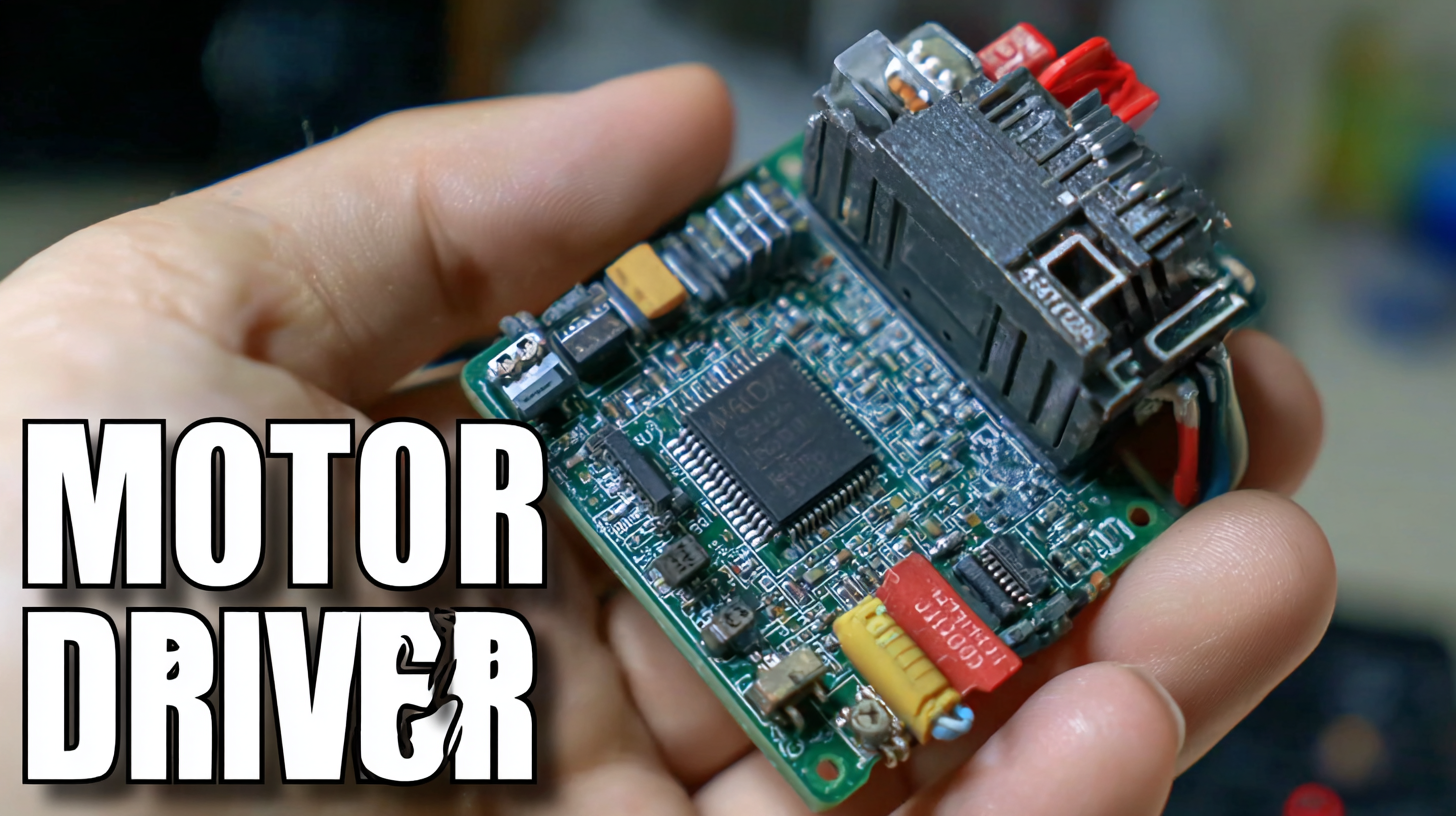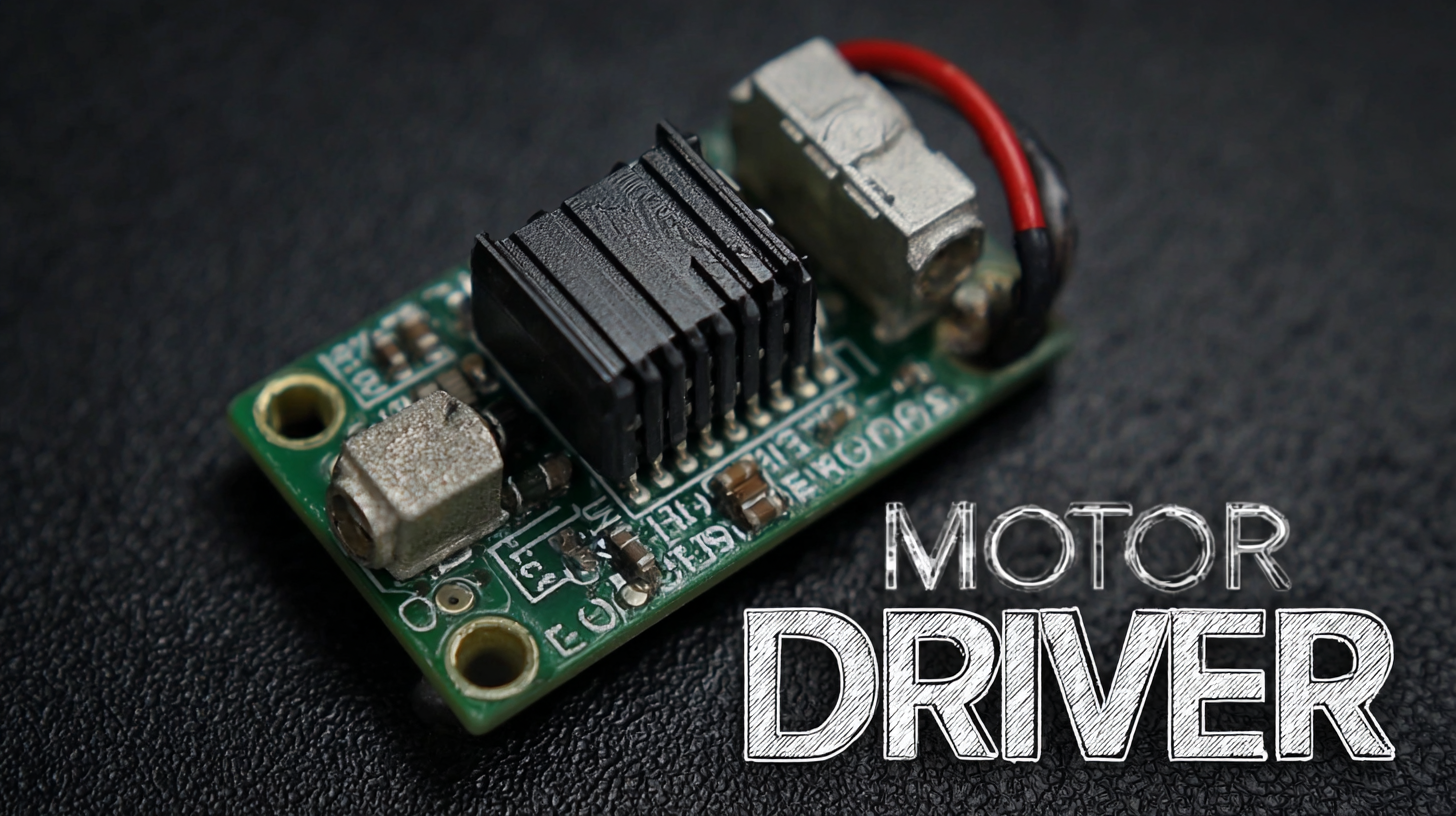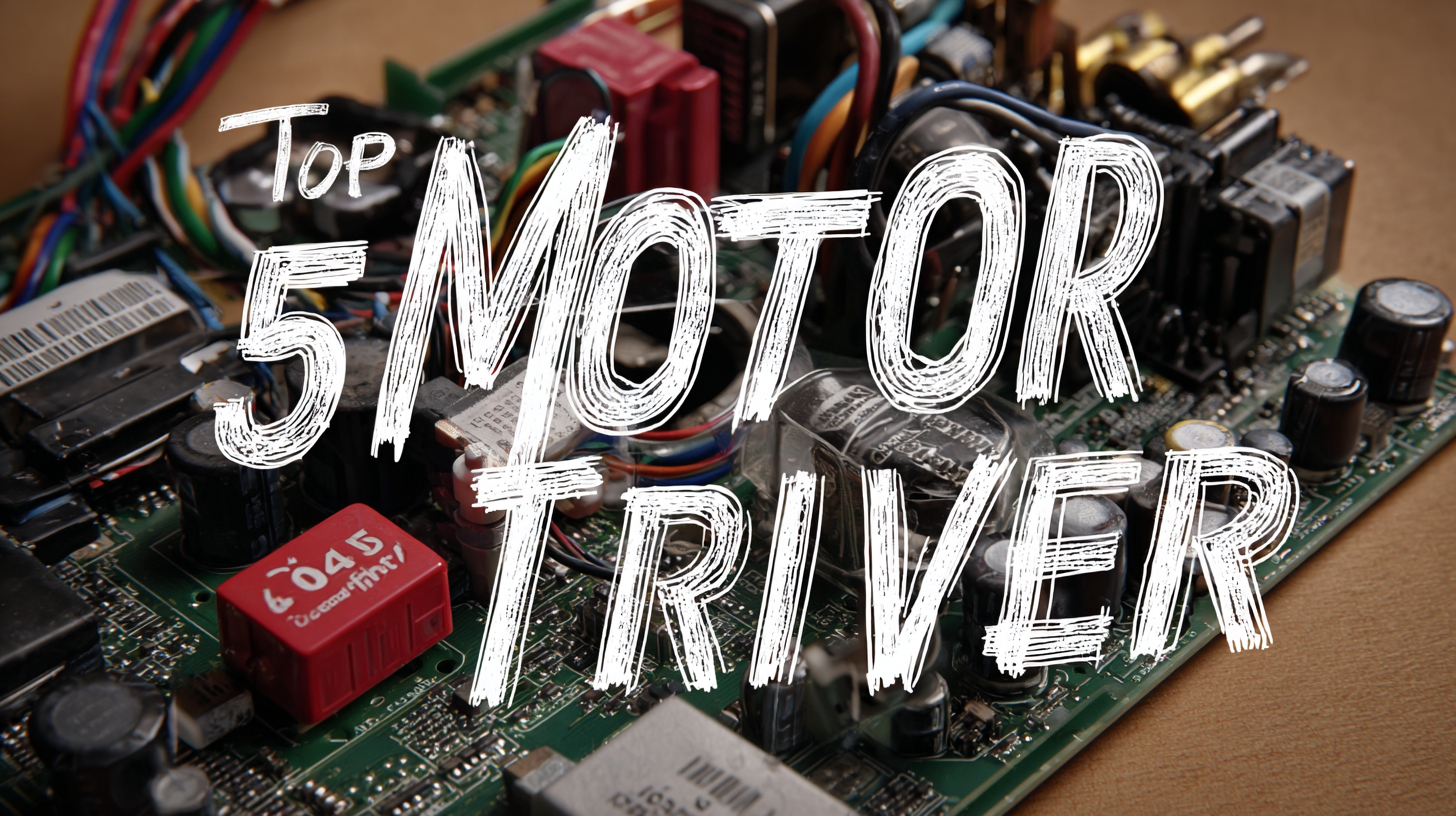
-
Home
-
Products
-
Application
-
Documents
-
News
-
Blog
-
Blog
-
Sinsegye
Leave Your Message
-
Wechat OA

-
 Baijia Hao
Baijia Hao



 Baijia Hao
Baijia Hao

In today's rapidly evolving technological landscape, selecting the right Motor Driver is crucial for optimizing performance in diverse applications, from robotics to automotive systems. According to a recent report by Grand View Research, the global motor driver market is projected to reach $3.18 billion by 2027, growing at a CAGR of 6.4%. This growth is driven by the increasing demand for efficient motor control solutions in industries such as manufacturing, consumer electronics, and automotive. Given the variety of motor driver options available, understanding your specific requirements—such as voltage, current, and control methods—is essential for making an informed decision. This blog post will provide you with five proven tips to help you navigate the selection process and choose the best Motor Driver that aligns with your unique needs, ensuring both optimal functionality and cost-effectiveness.

When selecting a motor driver for your project, understanding your specific requirements is crucial. Consider the type of motor you are using, whether it’s a stepper, servo, or DC motor. Each type has different control needs and power requirements. Evaluate the voltage and current ratings to ensure that the driver can handle what your motor demands without overheating or losing efficiency.
Another important aspect to ponder is the driving method. You may opt for a simple H-bridge for basic applications or more advanced drivers for complex tasks that require precision control. Keep in mind the control interface as well; some drivers may be more compatible with your existing microcontrollers or development boards.
Lastly, examine the protection features offered by potential motor drivers. Look for integrated mechanisms like thermal shutdown, overcurrent protection, and under-voltage lockout. These features are essential for safeguarding your system against potential failures, especially in demanding applications. By keeping these tips in mind, you can make a more informed decision that aligns with your project needs.

When selecting a motor driver, it's crucial to evaluate its performance based on voltage, current, and control features. According to a report by the International Electromechanical Commission (IEC), an effective motor driver must operate efficiently within a specific voltage range compatible with the motor's requirements. Typically, low-voltage drivers (below 30V) are favored for smaller applications, whereas high-voltage drivers (above 60V) are essential for industrial grade motors. An improperly matched voltage can lead to inefficiencies and potential damage.
Current handling capability is another key factor. A comprehensive study published by the IEEE Power Electronics Society highlights that many motor failures stem from insufficient current ratings. For example, a motor driver should be rated to provide at least 30% more current than the motor's maximum requirement to account for inrush currents and peak loads. This ensures not only proper performance but also longevity of both the driver and the motor.
Finally, the control features offered by a motor driver can significantly affect performance. Advanced drivers now include features such as PWM control and feedback mechanisms that allow for precise control over the motor's operation. A report from the Robotics and Automation Society noted that systems utilizing closed-loop control mechanisms could increase efficiency by up to 20% compared to open-loop systems. Therefore, prioritizing these features can lead to improved performance and reliability in applications across various industries.
When selecting a motor driver, ensuring compatibility with your existing components is paramount for a seamless integration into your systems. A motor driver must work harmoniously with the voltage and current ratings of your motor, as well as align with the control signals from your microcontroller or embedded system. For instance, if your project utilizes Raspberry Pi or Arduino, the chosen driver should support the specific I/O levels of these platforms. This compatibility not only prevents potential damage to components but also enhances the overall performance of your project.
Moreover, it’s vital to consider the future scalability of your system. As technologies evolve and requirements shift, having a motor driver that allows for easy adjustments or upgrades can save time and resources. Whether you’re integrating advanced functionalities like sensor feedback loops or connectivity with IoT devices, a compatible motor driver can facilitate these enhancements without requiring a complete system overhaul. This foresight in compatibility ensures that your project remains robust and adaptable in a rapidly advancing technological landscape.
When selecting a motor driver, the quality of the manufacturer plays a crucial role in ensuring reliability and longevity. Reliable manufacturers typically adhere to stringent quality assurance protocols, which significantly reduce the likelihood of defects and malfunctions. By vetting manufacturers based on their reputation and the certifications they hold, you can gain confidence in their commitment to producing high-quality components. Look for companies that provide thorough testing protocols and quality guarantees, as these factors are indicative of a manufacturer who values performance and customer satisfaction.
In addition to certifications, consider the manufacturer’s track record for delivering durable products under various conditions. Client testimonials and case studies can provide insights into how the motor drivers perform in real-world applications. Manufacturers who invest in research and development tend to produce innovative drivers that can adapt to evolving technological demands. Therefore, aligning yourself with a manufacturer that prioritizes quality assurance not only enhances the performance of your motor drivers but also ensures a long-lasting investment that can meet your specific needs efficiently.

When selecting a motor driver, the dilemma between cost and quality often arises. It’s easy to be swayed by lower-priced options, but these may compromise performance and longevity. A motor driver must efficiently match the specifications of your motor while ensuring reliability under various load conditions. This is where a careful balance of cost and quality comes into play, as investing in a reputable brand typically guarantees better support and durability.
To make informed decisions, consider the long-term implications of your choices. A lower-cost driver might save you money upfront, but potential failures or inefficiencies can lead to higher overall costs through repairs or replacements. Conversely, a quality motor driver, though initially more expensive, often proves to be a cost-effective solution over time. Conduct thorough research on specifications, user reviews, and warranty offerings. By taking these factors into account, you can confidently select a motor driver that meets your performance needs without sacrificing quality.